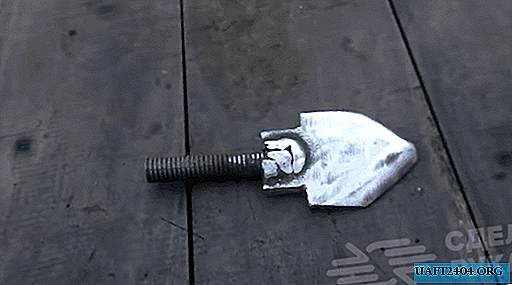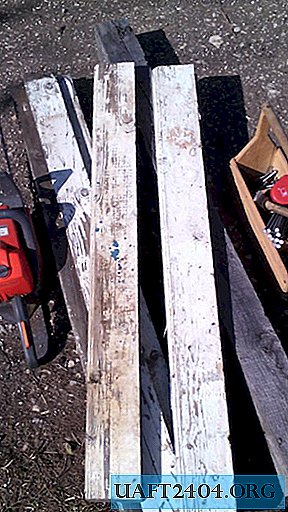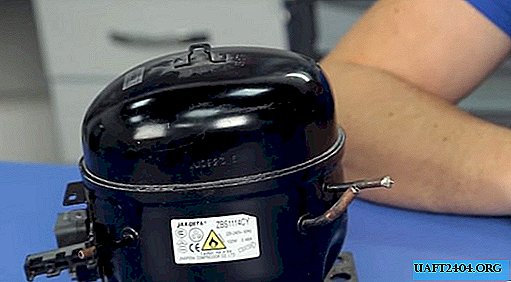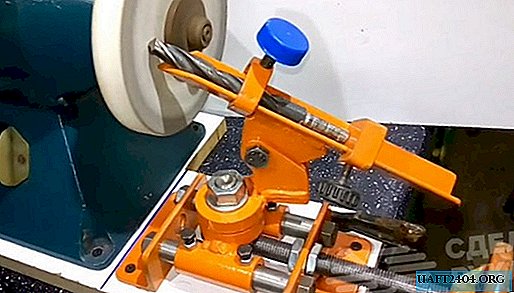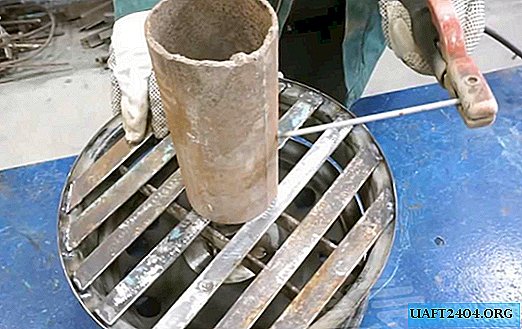Share
Pin
Tweet
Send
Share
Send
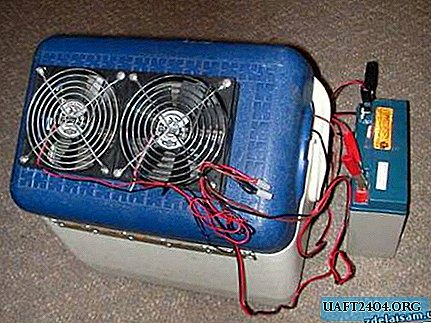
First you need to clearly understand that the car’s on-board network has a voltage of 12 volts (we don’t take trucks - let them roast there). The most affordable way to connect to the on-board network is the cigarette lighter socket.
An old forgotten container is taken by everyone (cooler bag),

interior radiator stove (suitable in size),

submersible pump, a couple of fans (size also matters), ducts, wires, and an old charger for a mobile phone.

We strengthen the pump at the bottom of the container. By the way, you can take the pump aquarium or from the barrel of the washer glass of the car. We stretch the wires out.

In the lid of the cooler bag, we make a square cutout from the inside, and two round round fans for the outside. We screw the fans, we combine their wiring.



On the inside of the lid we strengthen the radiator (with the pipes down). Can be planted on silicone.


For convenience, we attach the lid to the body with a piano loop (lying in the garage).

We connect the pump output to the radiator inlet on the cover. At the radiator outlet, you can also attach some kind of nt hose so that the water does not murmur much. We bring all the wires to the wires of the used battery charger and this whole system is ready for connection to the cigarette lighter!


How does it all work?
Ice is poured into the container (cold batteries can be used), water is poured. When turned on, the pump starts pumping cold water from the tank to the radiator, and the fans blow the cooled air out. Environmentally friendly? 100% economical? 100% Effective - yes, but only about an hour, then you need to fill in new ice. This system can be projected onto larger sizes-volumes. Moreover, you can use it indoors (then you can make 220V).
USB air conditioning
Hot time. But in many homes or offices unfortunately there are no air conditioners, and therefore you have to sit and languish from the heat. But there is a way! You can make a very simple USB air conditioner from improvised means.
We will need:
1) Waste CD DVD disc
2) Capacity (plastic, metal, no difference)
3) Several screws or sticks
4) Cooler, or other ventilating device
5) USB cable

Device:
1) There is nothing complicated in the manufacture of such an air conditioner. Take your container and visually divide it into 3 parts.
2) Take a disk, and drill / dig into it many, many holes. And if you have a metal mesh, an unnecessary sieve, then you can use it.
3) Insert this resulting sieve at a distance of 1/3 of the bottom.
4) Poke holes in this lower part from the side of the glass - they will receive warm air.
5) put ice on top of a sieve. When melting, all this will drain into the lower compartment, and then this water can simply be drained.
6) Well, the final step - on top of the whole structure you need to fix the cooler blowing out. I cut a square hole in the lid for him, and simply fixed it with glue on it, and closed the lid.
7) All that remains is to attach the USB cable to the wire. To do this, cut off the end that needs to be hooked to the fan, and pick up the red and black wires to the contacts.
DIY air conditioning
Autonomous evaporative air conditioning is designed for residential and public buildings up to 30 square meters. m. In winter, when the relative humidity is low, air conditioning is used to humidify the air. In the summer, you can install it in the window, it will simultaneously increase ventilation and cool the air. The operation of the air conditioner is simple.
Air enters it through the grill, in the oil filter it is cleaned of dust, passes through a humidifier and is fed into the room through the guide grill. An axial fan (with a capacity of 300 cubic meters / hour) sometimes makes noise, which is annoying. To reduce noise, an electric lamp or other resistance is connected in series with it in the fan circuitry. The lamp power is selected so that the noise is minimal. If the lamp is on, the hole serves as an indicator of the air conditioner.
The air conditioner humidifier is a box through which hygroscopic wicks of gauze, cambric, etc. are passed. The diameters of the holes for the wicks are 3 mm, the pitch is 5 mm. In the cross section of the box - 8 rows of holes.
On the box on the stand - a tank with a capacity of 1.5-2 liters. Water is poured into the tank. It goes down the wicks from the tank down, evaporates along the way, moistening the air, and not having time to evaporate it accumulates in the pan. After emptying the tank, water from the sump rises up through the wicks and again evaporates. So that the wicks do not rot, it is better to turn on the air conditioner only after complete evaporation of water.
An oil filter is a wooden frame to which a wire mesh is attached. The mesh size is 1x1 mm. The net is lubricated with liquid paraffin. When the filter becomes dirty, rinse it with hot water (1-2 times) per month.
Evaporative air conditioning was tested in several apartments and gave a positive effect.
COOLER-HUMIDIFIER. The principle of operation of a room cooler-humidifier is based on the need for a large amount of heat to evaporate water. About 3 liters of water is poured into the drip tray (8), mounted horizontally.
Sections of hygroscopic material built into the pallet (you can use ordinary cloth for towels) constantly absorb water, and a room fan (on the street side) in front of the sections constantly drains them with a continuous stream of air. The device is installed in the window. In this case, the temperature difference at the inlet and outlet is about 10 degrees, and the water consumption (for the climate of Central Asia) is about 1 liter per hour. Air intake can be done both from the street and from the room by adjusting the dampers. There are shutters (12) for directing the air flow, and a hatch (13) for filling water. Dust from the air settles in the pan. For the manufacture of this device, you can use wooden blocks and pressed and well-painted cardboard or plywood.

Share
Pin
Tweet
Send
Share
Send

